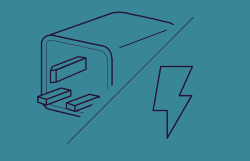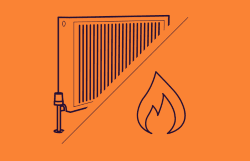Energy bills can be very costly. Many people simply accept the fact that they’re high and do not think about how to reduce them. Nevertheless, being aware of our exact energy usage can help us realise why we’re paying a certain amount. An energy audit is also referred to as an energy assessment. It’s a practice of verifying when, how, and where energy is used at your business’s premises or in your house. Knowing that allows you to better manage your energy consumption and start saving money on energy bills.
What happens during an energy audit?
During an energy audit, a certified energy auditor will inspect the building or home to evaluate how much energy it consumes. They will create a report that lists all the appliances that use energy, and they will give you recommendations on how to change your habits and consume less power.
Large businesses are required by law to carry out energy audits. Small and medium-sized firms are not obliged to do it, but it’s always a good idea to conduct one.
What is checked during the audit?
A good audit has to assess all factors that drive up the building’s energy usage. An overview of the main things that need to be checked during an audit can be found in the table below.
| what to check | what that covers |
| Equipment | Lighting – wattage, usage, location of lighting systemsHVAC system – Heating, Ventilation, and Air Conditioning Electrical appliances – office appliances like computers and printers, and household appliances like TVs or refrigerators |
| Building design | insulation on walls, floors, and ceilingsgaps around doors, windows, and vents |
| Energy consumption habits | turning off appliances that are not currently in useturning the lights off after leaving the roomnot having the heating on in unoccupied spaces |
Benefits of carrying out an energy audit
Thanks to an energy audit, you see what aspects of your business’s activity cost you the most money. You will also learn how to easily change your current energy usage. Not managing your energy consumption effectively can have a financial impact on your business. An energy audit lets you avoid spending large sums on energy bills.
The report you receive after an audit carried out by a professional helps you create a plan to reduce how much energy you use. Based on the findings of the audit you can also reduce your carbon footprint.
If you want your company to be more cost-efficient and promote innovation you should carry out an energy audit. It would also allow you to beat the competition by offering more sustainable, greener solutions that many clients appreciate nowadays.
How to conduct an independent energy audit
If you think an energy audit would be beneficial to your business, you can hire a qualified auditor to do it for you. Alternatively, you can do it yourself. The basic steps you need to follow are:
- Check how much energy you currently use
You should always start by doing it as that will make you realise which aspects, for example heating, lighting, or cooling, need to be improved. It will also help you monitor the savings after you implement energy-saving methods and tools. To complete this step you can use energy usage tracking spreadsheets that have many versions which can be found online. You can also do it by reviewing energy bills from the past few years.
- Conduct a site walkaround
Having a physical inspection of the building will allow you to identify any problems and areas that need work. You can also check if employees follow energy-efficient practices like turning the lights off after they leave the room.
- Think of a plan of action
Now that you know how the energy is used by your business, you can think of ways to reduce this consumption. That can include, for example, replacing light bulbs with more energy-efficient ones, switching to a new boiler, or insulating the building. You can also think of more long-term investments like purchasing solar panels.
- Get the team involved
Many employees might not be aware of how their energy consumption habits affect the energy bills of the company. You should encourage them to be more energy-efficient and explain to them how these changes can positively affect not only the business but also the environment.
Which office appliances use the most energy?
Not many people are aware of how much energy each office appliance uses. From the table below you can find out what their energy consumption is and how much using each part of the office equipment costs you each year.
| office appliance | energy usage (in watts) | annual cost (in £) |
| air conditioner | 4000 | 1460 |
| servers | 1000 | 1095 |
| projectors | 300 | 109.50 |
| light bulbs | 60 | 21.90 |
| printers | 50 | 18.25 |
| laptops | 50 | 18.25 |
| computer monitors | 25 | 9.13 |
| mobile phones (charging) | 5 | 1.85 |
Tips to save energy
There are several things that can help you reduce the costs of running your company and make your business more environmentally-friendly. The most important ones that are easy to implement but many people forget about them are:
- Turn off electronic devices when you’re not using them – you should also unplug them at the end of the day because even when you’re not using them they can be consuming energy.
- Switch the lights off when you’re not in the room – some believe that it’s better to leave the lights on if we’re going to come back to the room in a few minutes. Nevertheless, it is always better to turn them off and turn them back on again when we need them.
- Upgrade your equipment – even though buying new appliances requires an upfront investment, in the long run, you will save money as they will be consuming less energy than old models.
- Use thermostats and timers – thanks to smart technologies you can make sure that the heating and lights are only on when people are actually in the building.
- Replace light bulbs – many people forget to check what light bulbs they’re using, but using the wrong, not energy-efficient type can cost you a lot of money each year.
- Lower the temperature by 1 degree – most employees won’t notice and your energy bill will be much lower. Even as little as 1 degree can make a difference when it comes to saving money on energy bills.
- Consider installing solar panels – if you’re running a business, investing in solar panels might be a good decision. It will also allow you to show your customers that you care about the environment, which in turn might attract new clients.
- Switch energy providers – if your bills remain high despite the efforts to use less energy, you should compare tariffs available for businesses and see if some suppliers offer more competitive prices.
Checklist for conducting your own energy audit
Based on the information provided in this Guide you should realise that energy audits can be highly beneficial for businesses. Carrying out an independent energy audit is very simple but knowing where to start and what to pay attention to can be confusing. That’s why Niccolo has prepared a checklist with a few main points to evaluate that can make this process easier.
Step 1 – Check your energy bills
- Are there any times where your energy consumption is higher?
- Are there any periods of the year when you pay more for energy?
- Do you spend more on energy bills in the summer or in winter?
Step 2 – Check your habits
- Are your employees leaving the lights on in empty rooms?
- Are they opening the windows when the heating is on?
- Are they putting on the dishwasher when it’s not full?
- Are they turning appliances off and unplugging them when they’re not in use?
- Are all lights turned off at the end of the day?
- Are external lights turned off during the day?
Step 3 – Check appliances
- Are your appliances older than 10 years old?
- Are your appliances Energy Star certified?
- Is your air conditioning working properly?
- Are the appliances well maintained?
Step 4 – Check the lighting system
- Are you using LED light bulbs?
- Are you making the most of the sunlight?
- Are you using timers and sensors?
Step 5 – Check the composition of the building
- Are the windows properly sealed?
- Are the doors properly sealed?
- Is your building insulated?
- Are the windows double-glazed?
- Are there any roof leaks?
Step 6 – Check heating and cooling system
- Are your radiators dust-free?
- Is your cooling and heating system well maintained?
- Is your insulation in place?
- Is your air conditioning working properly?
- Are boilers working properly?
- Is the building efficiently ventilated?
- Are you using thermostats?
The checklist covers the most important things that you should pay attention to when carrying out an energy audit. Nevertheless, if you notice any other things that might be affecting your energy bills, feel free to take notes and include them in the audit report. It is also always worth hiring a professional who can properly inspect the entire building. This way you can be sure that you didn’t miss anything.



